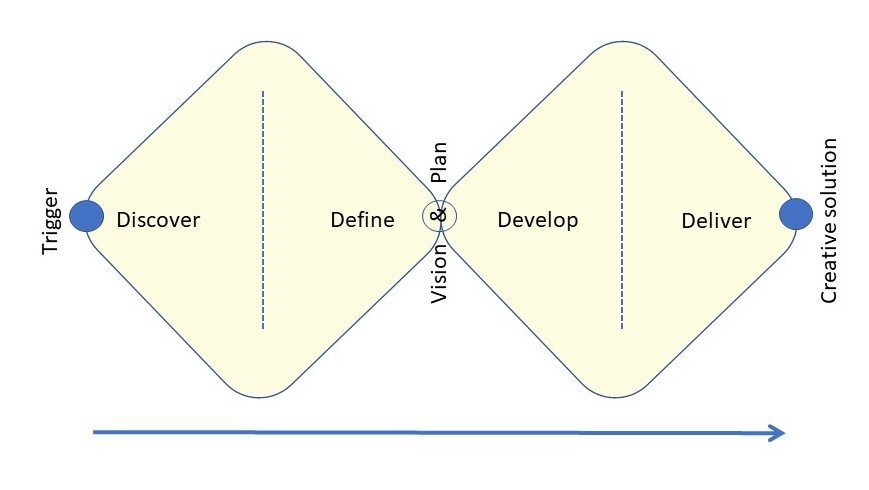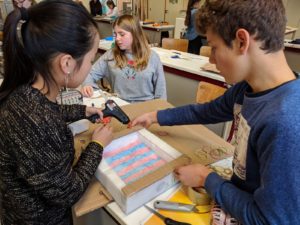Welcome to Unit 3 Hearing STEAM: What if we could change size?
On this page we will review some key resources from the Hearing STEAM group which we hope will give you inspiration to plan a relevant lesson with your own learners.
After you have reviewed these materials click on Mark Complete at the bottom of this page to move on to B: Create/Reflect
Case study and lesson plan
Idea to Explore
How can we control music and sounds through size?
Methodology
The sections below – Discover, Define, Develop and Deliver – align to the Design Thinking model:

Discover
Trigger
We talked about questions such as, ‘What is a pitch?’, ‘How do we create different pitches on instruments?’, ‘How does the size of an instrument change the pitch?’ and ‘How do we create different pitches with our voices?’.
Define
In the defining phase, we listened to recorded songs that we received from our partners in the other countries (e.g. the Norwegians singing a well-known children’s song). Subsequently, we started thinking about what kind of instruments we could make to play that same song and send it back to our partners. We looked for inspiration on the internet and came up with different ideas.
Develop
In the next phase, the pupils started working on creating instruments. For example, Denmark worked in the woodwork class and made most of their instruments out of wood (e.g. a string guitar).


Deliver
At the end of the day, the class came up with melodies and beats that could fit the song they had received earlier in the day. They recorded themselves playing their own instruments and uploaded their videos to eTwinning for their partner schools to listen to.

International Collaboration
We exchanged songs and ideas during the day through our project Twinspace on the eTwinning website.
Resources Needed
- iPads
- Design programmes and apps
- Recording gear
- Materials for making instruments
STEM to STEAM Analysis
Science: The pupils are introduced to size and sound e.g. how shorter chords have faster sound waves and hence a higher pitch.
Technology: Designing and making the instruments, recording music, exploring music and sound apps.
Engineering: Making instruments using a range of materials.
Art: Designing instruments, composing and playing music on self-made instruments.
Mathematics: Scaling and precise measuring as part of the instrument making.
Padlet – Ideas
Below is a Padlet of examples to help you to think about how you could develop this theme in your own teaching context.
You can open the Padlet in a new tab if you prefer: https://padlet.com/dlaberasmus/Unit3HearingSTEAMWhatifwecouldchangesize
After you have reviewed these materials click on Mark Complete at the bottom of this page to continue.
